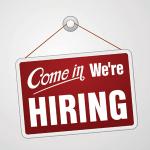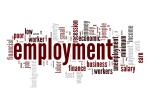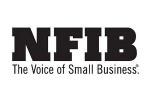CHICAGO — The very definition of what it means to be a “leader” has changed over the years, and those wishing to successfully lead their groups into the future need to be aware of it.
This was the message of Dirk Beveridge, founder of the strategy firm UnleashWD, during his webinar, “Reimagining Leadership in a Post-Pandemic World.” The webinar was hosted by the University of Innovative Distribution (UID) and made available to Textile Care Allied Trades Association (TCATA) members through partnership with UID.
In Part 1 of this series, we looked at some of the effects that the economic conditions of the past few years have had on the labor market and retaining employees — what Beveridge calls the “Great Redefinition” and the external, internal and people forces that are driving it.
“We, as leaders, need to be aware of these forces,” Beveridge says. “How they are impacting our business and how they’re impacting our people, so that we can, in fact, rethink how we lead our organizations going forward.”
External Forces
“The external forces are the ‘megatrends’ — the global trends that you and I have zero control over,” Beveridge says. “These are the forces that are changing the way we live, the way we work, and the way we play.”
These trends include supply chain issues, inflation, changing labor markets, new technology, social changes, consolidation in various industries, changing customer expectations and lingering COVID forces.
These external forces are not just acting on one segment or one industry. They go well beyond that. These forces affect the entire national — and global — economy.
“These are the trends that we can have no impact on, but they impact us,” Beveridge says, “because those external forces move into our markets, they move into our companies. And they generate the internal forces.”
Internal Forces
The internal forces, Beveridge says, are the ones that leaders must deal with and can at least have some agency over, although that agency could be limited.
“These are the challenges that you and I have in terms of attracting talent,” he says. “The challenges we have in retaining team members, and the succession that has taken place in our organizations. This includes the blending of generations in our businesses, the shifting needs and wants of employees and customers, margin pressures, and so on.”
And, while all these subjects need to be addressed to ensure the continued health of the owner’s company, leaders who ignore the third facet of the Great Redefinition, what Beveridge calls the people forces, will be facing an uphill battle.
People Forces
“I really believe that for years, we’ve talked about the disruption that our companies are facing,” Beveridge says. “But in reality, when you look at the last two and a half years, through COVID, and coming out of COVID, I believe that we as human beings, have been disrupted. Your employees, your team members, your peers — the individual has been disrupted. And, I believe, at a greater degree than even our companies have been disrupted.”
Part of this disruption comes from elements such as working with an increasingly diverse labor market and dealing with new business models, such as hybrid workforces.
These “people forces” include increased social pressures that have taken on new weight over the past few years.
“There’s the polarization of social and political views,” Beveridge says. “Three, four or five years ago, we didn’t have any problem talking about social or political issues in our organizations. But now, have any of you lost or almost lost a family member or a friend because over the water cooler or at a barbecue, you started talking, and then, all of a sudden, you started clashing? I’m not proud of it, but I have.”
Other elements of the people forces include the human toll of COVID, a shifting definition of work, and more desire for a better work/life balance.
“Everything is being redefined,” Beveridge believes, saying that changes are constantly coming, thanks in part to new technology, changing customer behaviors, the needs of employees, shifting marketing options, and other workplace realities.
Owners who play by a decades-old playbook in personnel management, Beveridge says, are setting themselves and their teams up for failure.
“It only makes sense,” he says, “that, if everything around us has been redefined, we need to reimagine leadership.”
Come back Thursday for the conclusion of this series, when we’ll examine what Beveridge has termed “Leadership’s Inflection Point.” For Part 1, click HERE.
Have a question or comment? E-mail our editor Dave Davis at [email protected].


































































































































































